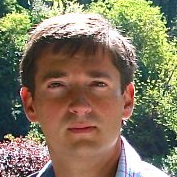Sound and Music Computing -- Music and Interaction
A special issue of Applied Sciences (ISSN 2076-3417). This special issue belongs to the section "Acoustics and Vibrations".
Deadline for manuscript submissions: closed (31 January 2020) | Viewed by 54734
Special Issue Editors
Interests: sonic interaction design; sound for virtual and augmented reality; audio-haptic interaction; sound synthesis by physical models; multimodal interfaces; multimodal perception and cognition; virtual and augmented reality
Special Issues, Collections and Topics in MDPI journals
Interests: music information retrieval; audio signal processing; machine learning; musical acoustics; serious games; eeg signal processing; multimedia aplications
Special Issues, Collections and Topics in MDPI journals
Interests: serious games; digital audio and image processing; pattern analysis and recognition and applications of signal processing techniques and methods
Special Issues, Collections and Topics in MDPI journals
Special Issue Information
Dear colleagues,
Sound and Music Computing is a highly multidisciplinary research field. It combines scientific, technological, and artistic methods to produce, model, and understand audio and sonic arts with the help of computers. Sound and music computing borrows methods from computer science, electrical engineering, mathematics, musicology, psychology, etc.
In this Special Issue, we aim for papers covering a wide selection of topics related to acoustics, psychoacoustics, music, technology for music, audio analysis, musicology, sonification, music games, machine learning, serious games, immersive audio, sound synthesis, etc. Therefore, the following topics will be considered:
- Acoustics and psychoacoustics;
- AI and music performance;
- Analysis/synthesis of the singing voice;
- Applications in audio and music;
- Architectural acoustics modeling and auralization;
- Assistive technologies;
- Audio and music for AR/VR;
- Audio and music for games;
- Audio interactions;
- Audio recognition and bird-singing;
- Auditory display;
- Automatic music generation/accompaniment systems;
- Bioacoustic modeling;
- Biomusic and sound installations;
- Computational archeomusicology;
- Computational musicology;
- Computational ethnomusicology;
- Computational ornithomusicology;
- Computer-aided real time composition;
- Computer music software and programming languages;
- Data sonification;
- Digital signal processing;
- Digital systems of tuning;
- Ethics of sound and new technologies;
- Gesture, motion, and music;
- History and aesthetics of electroacoustic music;
- Immersive audio/soundscape environments;
- Interaction and improvisation;
- Interactive environments for voice training;
- Interactive performance systems;
- Jazz performance and machine learning;
- Mathematical music theory;
- Music and robotics;
- Music games and music for games;
- Music information retrieval;
- Music technology in education;
- Music therapy and technology for special needs;
- New interfaces for musical expression;
- New musical instruments;
- Perception and cognition of sound and music;
- Recording and mastering automation techniques;
- Sonification;
- Sound/music and the neurosciences;
- Spatial sound and spatialization techniques;
- Physical models for sound synthesis;
- VR applications and technologies for sound and music.
Submissions are invited for both original research and review articles. Additionally, invited papers based on excellent contributions to the 2019 Sound and Music Computing Conference SMC-19 will be included. We hope that this collection of papers will serve as an inspiration for those interested in sound and music computing.
Prof. Dr. Stefania Serafin
Prof. Dr. Federico Avanzini
Prof. Dr. Isabel Barbancho
Prof. Dr. Lorenzo J. Tardón
Guest Editors
Manuscript Submission Information
Manuscripts should be submitted online at www.mdpi.com by registering and logging in to this website. Once you are registered, click here to go to the submission form. Manuscripts can be submitted until the deadline. All submissions that pass pre-check are peer-reviewed. Accepted papers will be published continuously in the journal (as soon as accepted) and will be listed together on the special issue website. Research articles, review articles as well as short communications are invited. For planned papers, a title and short abstract (about 100 words) can be sent to the Editorial Office for announcement on this website.
Submitted manuscripts should not have been published previously, nor be under consideration for publication elsewhere (except conference proceedings papers). All manuscripts are thoroughly refereed through a single-blind peer-review process. A guide for authors and other relevant information for submission of manuscripts is available on the Instructions for Authors page. Applied Sciences is an international peer-reviewed open access semimonthly journal published by MDPI.
Please visit the Instructions for Authors page before submitting a manuscript. The Article Processing Charge (APC) for publication in this open access journal is 2400 CHF (Swiss Francs). Submitted papers should be well formatted and use good English. Authors may use MDPI's English editing service prior to publication or during author revisions.
Keywords
- Audio signal processing
- Computer music
- Multimedia
- Music cognition
- Music information retrieval
- Music technology
- Sonic interaction design
- Virtual reality
- Interaction with music
- Serious game for music








